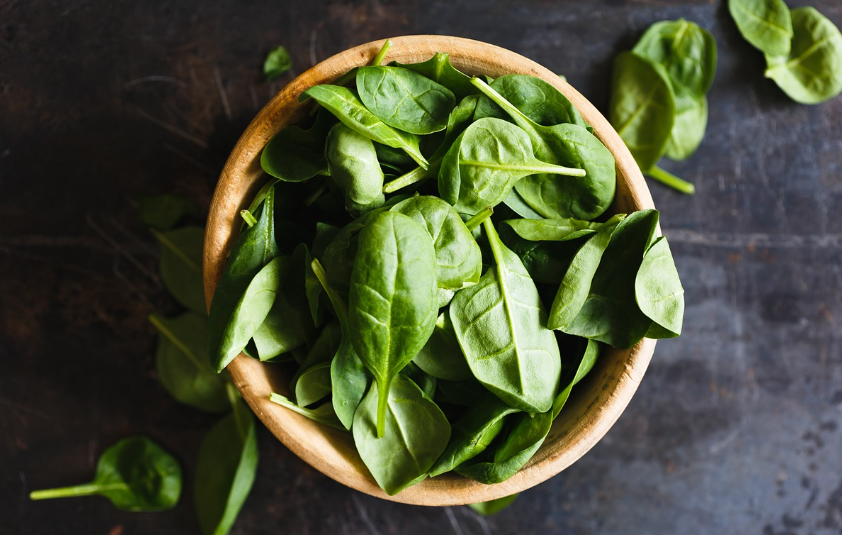Saint Moritz—a name synonymous with luxury, winter sports, and stunning alpine vistas—is also home to a rich culinary heritage that celebrates the region’s natural bounty. Beyond the glitz of upscale resorts and high-end events, the town’s food scene is deeply rooted in locally sourced ingredients, which lend an authentic flavor to its traditional dishes. In this comprehensive guide, we explore how local ingredients shape the gastronomic landscape of Saint Moritz, their role in preserving heritage, and the ways in which chefs and restaurateurs are reimagining age-old recipes with a modern twist.
The Culinary Landscape of Saint Moritz
Saint Moritz is renowned not only for its snow-capped peaks and luxurious lifestyle but also for its unique food culture that is inextricably linked to the land. The region’s culinary identity is built on the use of local ingredients—from fresh mountain herbs and dairy products to artisanal cured meats and naturally raised livestock. These ingredients are the backbone of the traditional dishes that define the local cuisine.
A Fusion of Heritage and Innovation
While the food scene in Saint Moritz pays homage to traditional Swiss recipes, it also embraces modern culinary techniques. This fusion of heritage and innovation is what sets the region apart. Chefs in Saint Moritz are committed to preserving the authenticity of classic dishes while also reinterpreting them to meet contemporary tastes and dietary trends. This dynamic approach not only keeps the culinary traditions alive but also propels them into the global spotlight.
Local Ingredients: Nature’s Bounty in the Swiss Alps
At the heart of Saint Moritz’s food scene is an abundance of local ingredients that have been cultivated and refined over generations. Let’s delve into some of the key ingredients that play a vital role in shaping the region’s gastronomic offerings.
Alpine Herbs and Vegetables
The cool, crisp air and fertile soils of the Swiss Alps yield an impressive array of herbs and vegetables. Wild alpine herbs such as chervil, thyme, and rosemary are staples in local kitchens, adding depth and aroma to traditional recipes. Seasonal vegetables—ranging from hearty root crops to delicate greens—are often grown in small, family-run farms and are prized for their fresh, robust flavors.
Dairy and Cheese
Switzerland’s reputation for producing world-class cheese is well known, and Saint Moritz is no exception. Local dairy farms supply an array of cheeses that are integral to regional dishes. From the nutty and creamy Gruyère to the rich, tangy flavors of Raclette cheese, these dairy products form the basis of many celebrated dishes. In addition to cheese, fresh cream, butter, and yogurt contribute to the region’s culinary richness, enhancing both savory and sweet preparations.
Freshwater Fish and Meats
The pristine lakes and rivers surrounding Saint Moritz provide an abundant supply of freshwater fish such as trout and char, which are often featured in local recipes. Similarly, the meat produced in the region—beef, lamb, and game—is known for its quality, thanks to traditional rearing practices and the natural diet of the livestock. The emphasis on locally sourced meats ensures that dishes are both flavorful and sustainable.
Artisanal and Cured Products
Local artisans play a significant role in preserving traditional methods of food production. Cured meats, dried fruits, and specialty breads are crafted with techniques passed down through generations. For instance, Bündnerfleisch—air-dried beef from the neighboring canton of Graubünden—is a delicacy that exemplifies the meticulous care taken in local food production. Such products not only add diversity to the food scene but also serve as cultural ambassadors, representing the region’s culinary artistry.
Traditional Dishes That Celebrate Local Flavors
The unique ingredients of Saint Moritz give rise to dishes that are as rich in history as they are in flavor. Here are some classic examples that highlight the region’s culinary prowess.
Cheese Fondue
A quintessential Swiss dish, cheese fondue is a communal meal that brings people together. In Saint Moritz, fondue is often prepared using a blend of local cheeses such as Gruyère and Emmental, mixed with a touch of wine and garlic. The result is a velvety, aromatic dish that is both comforting and indulgent. Traditionally enjoyed with crusty bread and potatoes, fondue is a testament to the region’s emphasis on using the best of local dairy produce.
Raclette
Raclette is another iconic dish that has found its way into the hearts of locals and visitors alike. This dish involves melting a wheel of cheese and scraping off the softened layer, which is then served over boiled potatoes, pickles, and cured meats. The simplicity of Raclette, combined with the complex flavors of the locally produced cheese, makes it a favorite winter dish in Saint Moritz.
Rösti
Originally a farmer’s breakfast, rösti has evolved into a versatile dish that can be served as a side or a main course. Made from grated potatoes fried until crispy on the outside and tender on the inside, rösti is often enhanced with local ingredients such as herbs, bacon, or cheese. Its humble origins and hearty taste perfectly embody the spirit of alpine cooking.
Bündner Nusstorte
This rich, nut-filled pastry is a specialty of the Graubünden region, not far from Saint Moritz. Made with a delicate pastry base and filled with caramelized walnuts, Bündner Nusstorte is a dessert that encapsulates the sweet, earthy flavors of the region. It is often enjoyed with a cup of locally roasted coffee or tea, offering a perfect end to a sumptuous meal.
The Role of Local Producers and Artisans
Integral to Saint Moritz’s food scene is the network of local producers and artisans who supply the ingredients that make these traditional dishes possible. These producers work diligently to maintain sustainable practices and preserve the authenticity of their products.
Family-Run Farms and Organic Practices
Many of the ingredients used in Saint Moritz’s cuisine come from family-run farms that have been in operation for generations. These farms focus on organic and sustainable practices, ensuring that the produce is not only of the highest quality but also grown with respect for the environment. The close relationship between farmers and chefs in the region allows for a deep understanding of seasonal availability and the unique characteristics of local produce.
Artisanal Craftsmanship
Artisans in Saint Moritz continue to uphold traditional methods of food preparation. Whether it’s handcrafting cheeses, curing meats, or baking specialty breads, these practices are a vital part of the region’s cultural heritage. Their commitment to quality and tradition ensures that every bite carries with it the legacy of centuries of culinary expertise.
Supporting Local Economies
By sourcing ingredients locally, restaurants and food businesses in Saint Moritz not only enhance the authenticity of their dishes but also support the local economy. This symbiotic relationship ensures that traditional methods and small-scale production can thrive in a modern world. It also encourages innovation, as chefs experiment with traditional ingredients to create new and exciting dishes that still respect the region’s heritage.
Culinary Innovation: Melding Tradition with Modernity
While the foundation of Saint Moritz’s food scene is firmly rooted in tradition, modern culinary innovation is also playing a significant role in its evolution. Chefs in the region are increasingly looking for ways to reinterpret classic dishes by incorporating contemporary techniques and global influences.
Michelin-Starred Experiences
Many of the high-end restaurants in Saint Moritz are helmed by renowned chefs who have earned Michelin stars for their innovative approaches. These establishments blend the old with the new—using traditional ingredients in unexpected ways to create dishes that are both visually stunning and gastronomically complex. For instance, a modern take on cheese fondue might incorporate infused oils or rare spices that elevate the classic recipe without overshadowing its origins.
Fusion Cuisine
Fusion cuisine is another trend that is making waves in Saint Moritz. Chefs are combining local ingredients with international culinary styles to create hybrid dishes that appeal to global palates. This approach not only broadens the appeal of traditional Swiss food but also introduces new flavor profiles and textures that can surprise and delight diners. The fusion of East and West, old and new, is a reflection of the dynamic nature of the region’s food scene.
Farm-to-Table Initiatives
There is a growing emphasis on farm-to-table dining in Saint Moritz, where restaurants forge close partnerships with local farmers and producers. This initiative ensures that the ingredients used in the kitchen are as fresh and authentic as possible, and it also provides consumers with a transparent view of where their food comes from. These initiatives are a win-win: they promote sustainable agriculture and allow diners to enjoy the true taste of the region.
Beyond the Plate: Cultural and Social Impact
The influence of local ingredients in Saint Moritz’s food scene extends far beyond the dining table. It has a profound impact on the cultural identity of the region and the social fabric of its communities.
Preserving Culinary Heritage
In a world that is increasingly dominated by fast food and mass production, the emphasis on local ingredients helps preserve the culinary heritage of Saint Moritz. Traditional recipes, passed down through generations, are not only maintained but also celebrated. Every dish tells a story—of the land, the people, and the history that has shaped the region. This preservation of tradition ensures that the unique flavors of Saint Moritz continue to thrive, even as the world around them evolves.
Promoting Sustainable Tourism
Sustainable tourism is a key focus for many destinations, and Saint Moritz is no exception. By highlighting the use of local ingredients, the region promotes a model of tourism that is respectful of nature and supportive of local communities. Travelers are increasingly drawn to experiences that offer authenticity and a connection to the local culture. In Saint Moritz, enjoying a meal made from locally sourced ingredients becomes a part of a broader narrative of responsible and enriching travel.
Community Engagement and Education
Local food initiatives often involve community engagement and education. Cooking classes, food tours, and farmers’ markets provide residents and visitors with opportunities to learn about the origins of their food. These experiences not only foster a deeper appreciation for the region’s culinary traditions but also empower local producers by creating a direct connection with consumers. This educational aspect reinforces the importance of local agriculture and artisan craftsmanship, ensuring that the legacy of Saint Moritz’s food culture is passed on to future generations.
Global Recognition and Cultural Exchange
Saint Moritz’s commitment to using local ingredients has also helped position it on the global culinary map. International food festivals, gastronomic events, and media coverage have all contributed to showcasing the region’s rich culinary heritage. This global recognition paves the way for cultural exchange, where chefs, food critics, and culinary enthusiasts from around the world come together to celebrate and learn from each other’s traditions. The exchange of ideas enriches the local food scene and inspires further innovation.
Practical Tips for Food Lovers Visiting Saint Moritz
If you’re planning a visit to Saint Moritz with a focus on exploring its food scene, here are some practical tips to help you make the most of your culinary journey:
1. Research and Plan Ahead
Before you arrive, spend some time researching the local restaurants, markets, and food festivals. Look for establishments that emphasize farm-to-table practices and are known for using local ingredients. Many restaurants offer seasonal menus that highlight the best of what the region has to offer.
2. Engage with Locals
Don’t hesitate to strike up a conversation with local chefs, farmers, and artisans. They can provide invaluable insights into the history and significance of the ingredients used in traditional dishes. Local recommendations often lead to hidden gems that might not be widely advertised.
3. Attend Food Tours and Cooking Classes
Participating in guided food tours or cooking classes can significantly enhance your understanding of Saint Moritz’s culinary culture. These experiences allow you to taste, learn, and interact with the local food community in a meaningful way.
4. Embrace Seasonal Dining
The food in Saint Moritz is very much influenced by the seasons. Plan your visit during a season when local produce is at its peak. Winter, for example, is ideal for enjoying hearty dishes like fondue and raclette, while summer brings fresh salads and vibrant, lighter fare.
5. Explore Local Markets
Local markets are the heart of any food culture. Visit farmers’ markets and specialty shops where you can purchase artisanal cheeses, cured meats, fresh herbs, and traditional baked goods. This not only gives you a taste of local flavors but also supports the community directly.
6. Document Your Experience
Keep a journal or blog about your culinary adventures in Saint Moritz. Not only will this help you remember the delightful flavors and experiences, but it can also serve as inspiration for others who wish to explore the region’s food scene.
Conclusion: A Celebration of Local Flavors
The role of local ingredients in Saint Moritz’s food scene is a powerful testament to the region’s rich heritage and commitment to quality. From the rugged, aromatic herbs of the Alpine meadows to the exquisite cheeses and cured meats crafted by local artisans, every ingredient tells a story—a story of tradition, innovation, and a deep connection to the land.
By choosing to dine on dishes made with locally sourced ingredients, both residents and visitors contribute to a cycle of sustainability and cultural preservation. They become part of a movement that values authenticity over mass production, craftsmanship over convenience, and history over fleeting trends.
As you explore the culinary landscape of Saint Moritz, let each bite transport you to a place where nature, culture, and artistry converge. Whether you’re indulging in a classic cheese fondue, savoring the delicate balance of flavors in a modern reinterpretation of a traditional dish, or simply enjoying the scenic beauty of a local market, you are witnessing the essence of what makes Saint Moritz’s food scene so extraordinary.
In a world where global brands often dominate the conversation, the local ingredients of Saint Moritz stand as a proud reminder that the best flavors are those that are nurtured by the soil, harvested with care, and prepared with passion. They are the true ambassadors of the region—timeless, resilient, and remarkably inspiring.
So next time you find yourself in the snowy wonderland of Saint Moritz, take a moment to appreciate the local ingredients that make every meal a celebration of heritage. Embrace the story behind each dish and join in the movement to support and preserve the culinary traditions that define this magnificent corner of the world.



